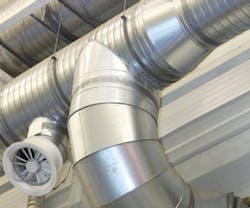New FM Resources Target Building Efficiency
Newly released guidance on building enclosure commissioning and variable refrigerant flow systems encourages the adoption of energy efficient systems and practices.
A second edition of the National Institute of Building Sciences’ enclosure commissioning guide updates the 2005 original with refined performance objectives for enclosure issues such as moisture control, condensation, heat and air flow, water vapor flow, noise, fire, vibrations, light, infrared and UV radiation, and more.
Based on ASHRAE Guideline 0-2005: The Commissioning Process, the new NIBS recommendations reflect current developments in industry thinking about building envelope commissioning, including differing roles for building envelope commissioning agents (a team-designated person who formally documents the project-specific commissioning efforts) and building envelope specialists (experts in the enclosure systems used on the proposed building who have experience and technical qualifications).
“NIBS Guideline 3-2012 is a guideline for a process, not a one-size-fits-all standard for commissioning,” says Robert Kistler, chair of the committee that developed the revised guideline. “Commissioning objectives for any given building can vary by the type of owner, occupancy, use, size, and specific project requirements.”
ASHRAE’s 2012 handbook volume, HVAC Systems and Equipment, now features in-depth coverage of variable refrigerant flow systems, which use less energy than traditional on-off cooling by varying the amount of refrigerant sent to the multiple evaporators assigned to each condensing unit.
The chapter details VRF applications, how the system works, load analysis and design, and how to design to ASHRAE standard requirements, as well as guidance on costs, controls, and safety.
“VRF systems can connect more than 100% nominal capacity of indoor units – up to 150% in some cases,” says Paul Doppel, chair of the ASHRAE technical committee on VRF that wrote the chapter. “This shows how VRF can be used to satisfy changing building conditions with smaller capacity systems by using building diversity and multiple indoor units.”
Download the NIBS guideline for free at www.nibs.org.
